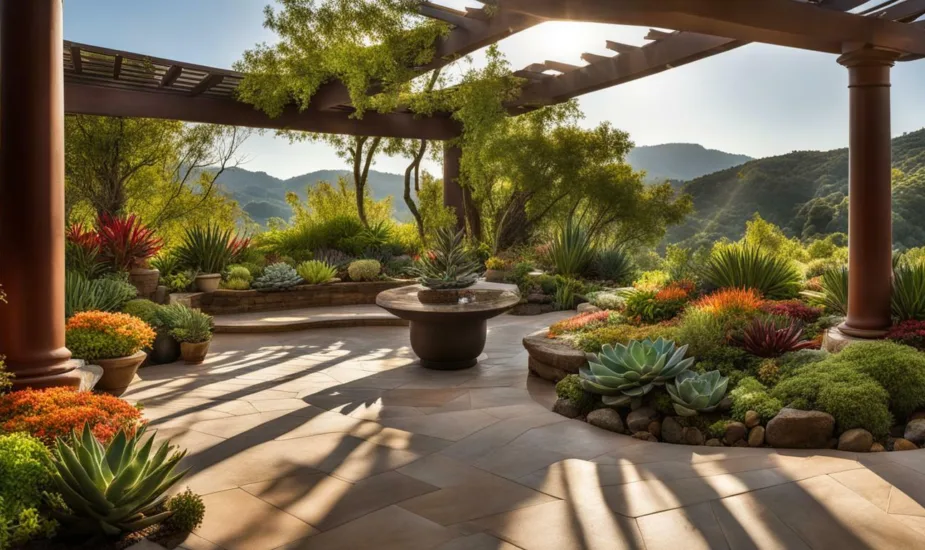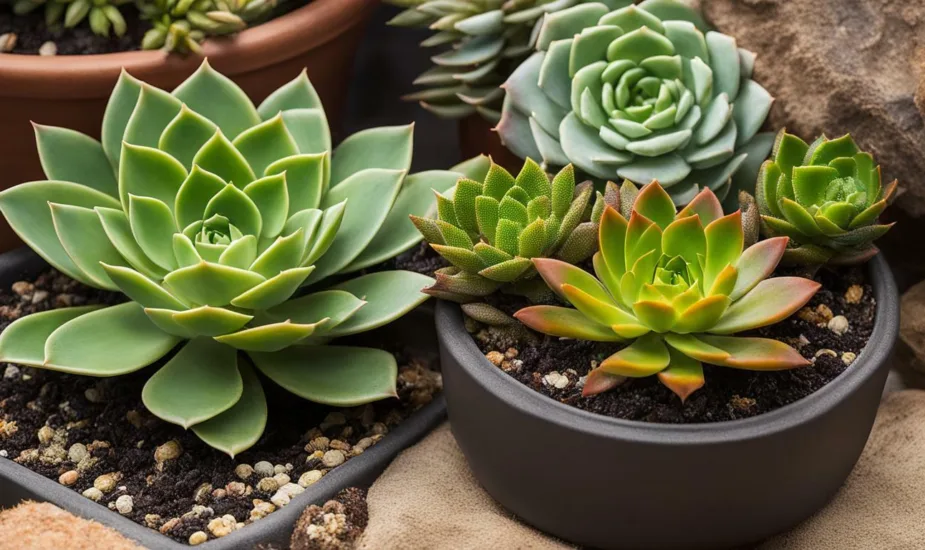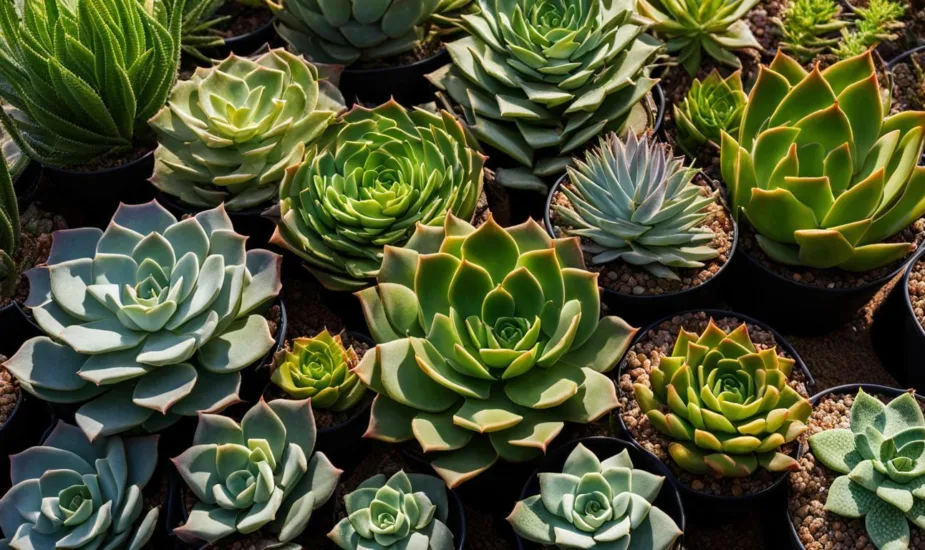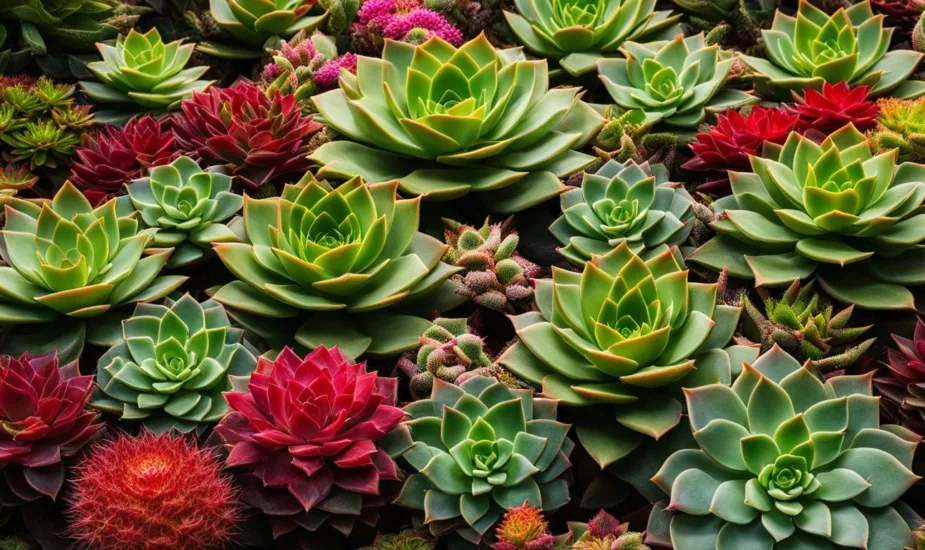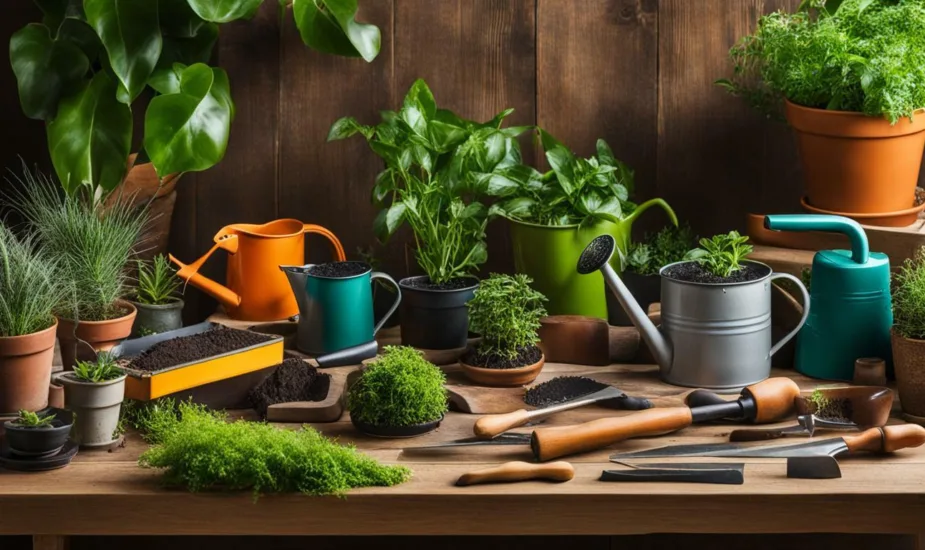Growing Peonies in Pots: Easy Guide for Beginners
Beginner's guide to growing peonies in pots. Learn how to nurture stunning blooms with our easy tips. Start your potted peony garden now!

Welcome to my guide on growing peonies in pots! Container gardening is a fantastic way to cultivate peonies in limited spaces while creating a stunning display of colorful blooms. Whether you are a seasoned gardener or just starting, this guide will provide you with the necessary steps to successfully grow beautiful peonies in pots, creating an eye-catching and fragrant addition to your outdoor space.
Container gardening with peonies is ideal for anyone with limited outdoor space or for those who want to add a touch of color and fragrance to their deck, patio, or balcony. By growing peonies in pots, you can easily move them around, giving you the freedom to rearrange your garden as desired.
Key Takeaways:
- Growing peonies in pots is an ideal solution for limited outdoor space.
- Container gardening with peonies allows for easy movement and rearrangement of your garden.
Choosing the Right Container for Peonies
When it comes to container gardening with peonies, choosing the right container is essential for the success of your plants. Here are some tips on selecting the best container for your peonies:
Terracotta Pots
Terracotta pots are a popular choice for growing peonies in containers. They are available in a range of sizes and shapes, and their porous nature allows for better drainage and aeration. However, they can be heavy and may crack in extreme temperatures.
Plastic Containers
Plastic containers are lightweight and affordable, making them a convenient option for container gardening with peonies. They come in a variety of colors and sizes, and are less likely to crack or break than terracotta pots. However, they may not provide as much drainage as other container options.
Wooden Barrels
Wooden barrels can add a rustic charm to your container garden, and they provide good drainage and aeration. They can be heavy and are more expensive than other container options, but they are durable and can last for several years.
When selecting a container for your peonies, choose one that is at least 12 inches deep and wide, with drainage holes at the bottom. Keep in mind that larger containers will provide more soil and moisture for your peonies to thrive.
Selecting the Perfect Peony Variety for Containers
When it comes to selecting the perfect peony variety for containers, there are a few factors to consider. Compact or dwarf varieties are best, as they are better suited to the finite growing conditions of a container.
The bloom size and season should also be considered, as some varieties may produce larger or more abundant blooms than others. Additionally, it is important to take into account the growth habits of the plant, such as whether it spreads or grows upright, to ensure it will thrive in a confined space.
Preparing the Soil and Planting Peonies in Containers
One of the key factors to successfully growing peonies in pots is preparing the soil. Peonies require well-draining, nutrient-rich soil to thrive, so it’s essential to select the right soil mix for your containers.
Start by choosing a high-quality potting mix that provides good drainage and aeration. Avoid using garden soil, as it tends to be heavy and may not drain well in containers.
Next, add perlite or coarse sand to the potting mix to improve drainage. Aim for a soil mix that is well-draining but still retains some moisture so that your peonies can absorb the necessary nutrients and grow well.
Before planting your peonies, ensure that the container has adequate drainage holes to prevent water from accumulating, which can lead to waterlogging and root rot. Fill the bottom of the container with a layer of gravel or broken clay pot pieces to further promote drainage.
When planting your peonies, dig a hole in the soil mix that’s deep and wide enough to accommodate the roots. Loosen the roots gently and place the plant in the hole, making sure the crown of the plant is level with the soil surface.
Fill the hole with the soil mix and gently press it down around the roots to remove any air pockets. Water the plant generously to help settle the soil and encourage the roots to establish themselves in the container.
It’s important to maintain proper drainage for your potted peonies by ensuring that excess water drains away from the container. Consider placing the container on a saucer or using pot feet to elevate it slightly above the ground to allow for proper drainage.
Watering and Fertilizing Potted Peonies
Proper watering and fertilization are crucial for the healthy growth of potted peonies. As a general rule of thumb, potted peonies should be watered when the top inch of soil feels dry to the touch. Overwatering can lead to root rot, while underwatering can prevent the plant from absorbing crucial nutrients.
Fertilizing potted peonies is also important for promoting healthy growth and vibrant blooms. Choose a slow-release fertilizer that is rich in phosphorus, the nutrient that promotes blooming. Apply the fertilizer once in the spring and again in early summer, following the manufacturer’s instructions for dosage and application.
Providing Adequate Sunlight and Temperature Conditions
Peonies thrive in full sun and require at least 6-8 hours of direct sunlight each day. When growing peonies in containers, it is essential to ensure that they receive enough light, especially when they are grown in limited spaces or shaded areas.
If you are growing peonies in a spot that doesn’t receive enough sunlight, consider using grow lights to supplement the natural light. You can purchase grow lights online and set them up above your containers to ensure that your plants receive sufficient light.
Peonies also prefer cool temperatures and don’t do well in extremely hot weather. If you live in an area with hot summers, keep your containers in a spot that receives morning sun and afternoon shade. You can also place a shade cloth over the plants during the hottest part of the day to protect them from excess heat.
Pruning and Deadheading Potted Peonies
Proper pruning is crucial for maintaining healthy and vibrant potted peonies. I recommend pruning in early spring, just as new growth begins to emerge. Using a clean and sharp pair of pruning shears, remove any dead or damaged stems, as well as any crossing branches that may rub against each other.
To encourage bushier growth, you can also selectively prune the tips of the outermost stems. This will help redirect the plant’s energy towards the center of the foliage and encourage fuller growth.
It’s also important to deadhead spent blooms on your potted peonies throughout the growing season. This will help promote continuous flowering and prevent the plant from wasting energy on producing seed heads. To deadhead, simply snip off the spent blooms just above the first set of healthy leaves.
By following these pruning and deadheading techniques, you can ensure that your potted peonies remain healthy and beautiful all season long.
Overwintering and Protecting Potted Peonies
Peonies are hardy perennials that can withstand colder temperatures, but potted peonies are more vulnerable to frost and extreme cold. Proper overwintering and protection measures can help ensure your potted peonies survive the winter and thrive again in the spring.
Preparing for Winter
Before winter hits, it is essential to prepare your potted peonies for the colder months. Begin by checking the soil and adding a layer of compost or mulch to protect the roots from temperature changes. Additionally, if you’re using terracotta or ceramic pots, move them inside to prevent cracking due to winter temperatures.
Insulating Potted Peonies
There are a few different ways to insulate potted peonies in the winter. You can wrap the pots with burlap or bubble wrap to provide additional insulation, or you can bury the pots in the ground up to the rim. If you choose the latter option, make sure you remove the pots from the ground in the spring, as they can become waterlogged when the snow melts.
Protecting from Frost and Extreme Cold
If you live in an area with particularly harsh winters, consider bringing your potted peonies indoors. An unheated garage or shed can provide enough shelter to protect your plants from frost and extreme cold. However, ensure they receive enough moisture and sunlight to prevent them from going dormant.
Another way to protect potted peonies is to use frost blankets or cloths. These materials can help trap heat around the plants, keeping them warm during cold snaps or frosty nights.
By following the steps outlined above, you can ensure your potted peonies survive the winter and thrive again in the springtime. With the proper care, you can enjoy the beauty and fragrance of these stunning blooms for years to come.
Conclusion
In conclusion, growing peonies in pots is a great way to enjoy these beautiful flowers in small spaces or limited areas. With the right container, soil, and care, peonies can thrive in pots and provide stunning blooms year after year. By selecting the perfect peony variety, preparing the soil, watering and fertilizing properly, providing adequate sunlight and temperature conditions, and protecting potted peonies during the winter, you can enjoy the beauty and benefits of container gardening with peonies.
Remember to choose a container that is large enough for your peony and has proper drainage, use well-draining and nutrient-rich soil, water and fertilize regularly, and provide your plant with at least 6 hours of sunlight per day. Additionally, make sure to deadhead spent blooms and prune your plant as needed to encourage healthy growth.
With these tips and tricks, you can successfully grow peonies in pots and enjoy the beauty and elegance of these stunning flowers in your home or garden. So what are you waiting for? Start planting and enjoy the beauty of your blooming peonies!
FAQ
Q: Do peonies grow well in pots?
A: Yes, they do. Peonies can be successfully grown in pots. Container gardening allows for peony cultivation in limited spaces and offers the flexibility to move the plants as needed.
Q: What containers are best for growing peonies?
A: When choosing containers for peonies, opt for terracotta pots, plastic containers, or wooden barrels. Ensure the container has adequate drainage and is the appropriate size for the peony plant.
Q: What peony varieties are suitable for container gardening?
A: Compact or dwarf peony varieties are well-suited for container gardening. Consider factors such as bloom size, season, and growth habits when selecting peonies for pots.
Q: How do I prepare the soil and plant peonies in containers?
A: Use well-draining, nutrient-rich soil for potted peonies. Prepare the soil by loosening it and adding compost or organic matter. Plant the peony at the appropriate depth, ensuring proper drainage.
Q: How often should I water and fertilize potted peonies?
A: Water potted peonies regularly, keeping the soil consistently moist but not waterlogged. Fertilize with a balanced fertilizer according to the recommended schedule, usually in early spring and after flowering.
Q: How much sunlight do peonies in pots need?
A: Peonies require at least 6 hours of sunlight per day. Ensure they receive adequate light, especially when grown in small spaces or shaded areas. Consider providing supplemental lighting if needed.
Q: How do I prune and deadhead potted peonies?
A: Prune potted peonies in early spring before new growth appears. Cut back any dead or diseased stems and shape the plant as desired. Deadhead spent blooms to encourage continuous flowering.
Q: How do I protect potted peonies during winter?
A: Overwinter potted peonies by insulating the containers and protecting them from frost or extreme cold. Wrap the pots in insulating material or move them to a sheltered area. Ensure the soil remains moist but not waterlogged.
Q: Will potted peonies bloom first year?
A: Potted peonies may bloom in their first year, but it is not guaranteed. Peonies typically take a year or two to establish their roots and build up energy before producing their first blooms. Additionally, the blooming time can vary depending on the variety of peony and the growing conditions. It is best to provide proper care and patience to allow the peonies to establish themselves before expecting blooms.
Q: Which peonies are best for containers?
A: There are several peony varieties that are well-suited for growing in containers. Here are a few options: Paeonia lactiflora “Bowl of Beauty”, Paeonia lactiflora “Sarah Bernhardt”, Paeonia lactiflora “Festiva Maxima”, Paeonia lactiflora “Coral Charm”, Paeonia suffruticosa (Tree Peonies).
When selecting a peony for containers, it is important to choose compact varieties and provide them with well-draining soil, regular watering, and appropriate fertilization to ensure their healthy growth and bloom.
 Little Garden Tips
Little Garden Tips




